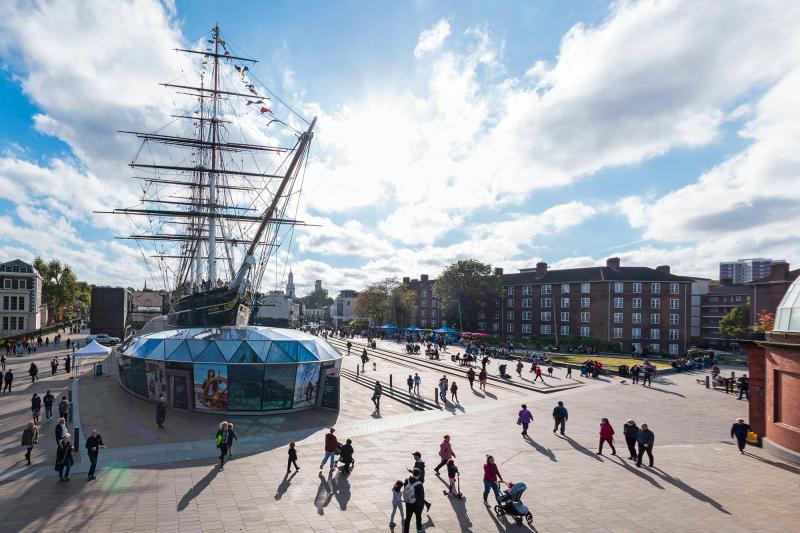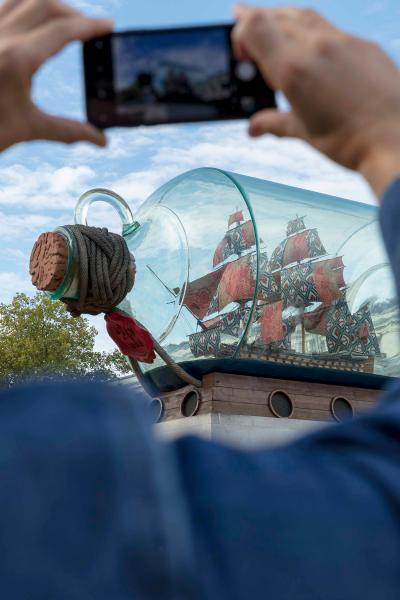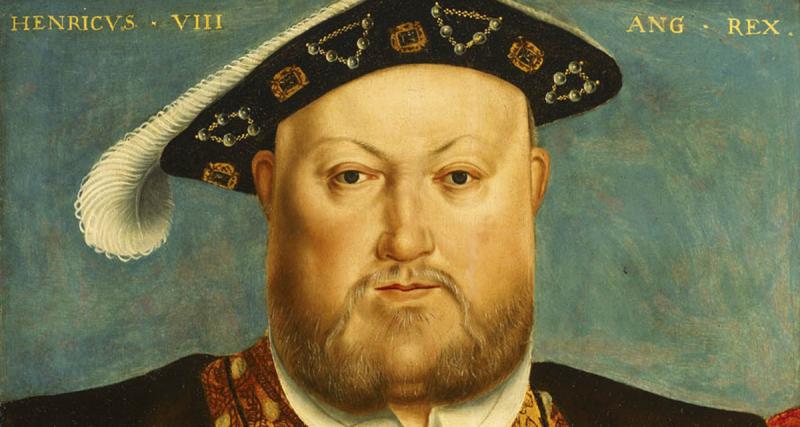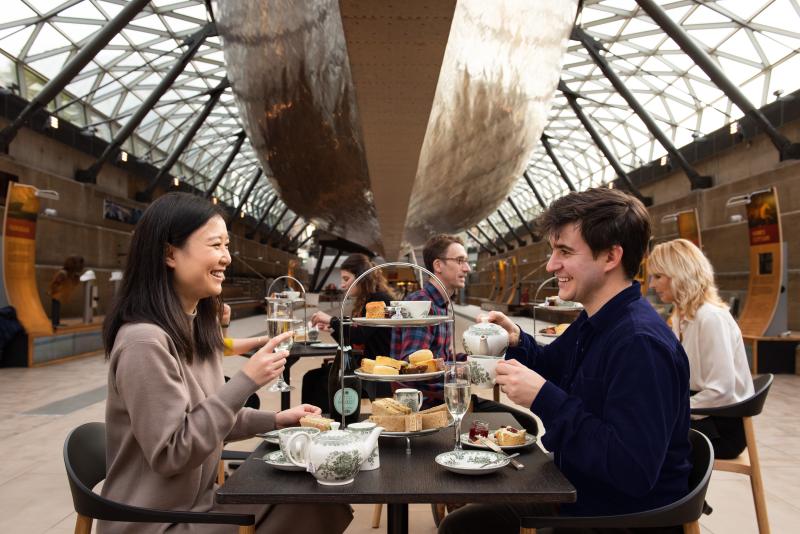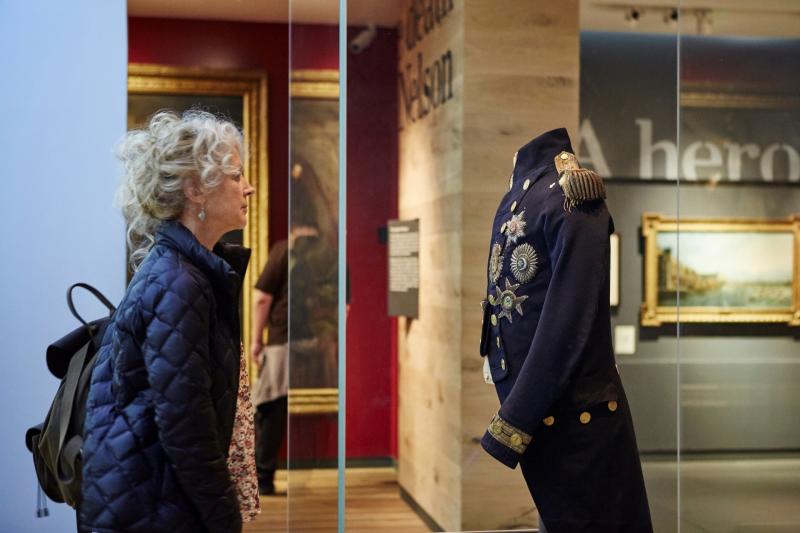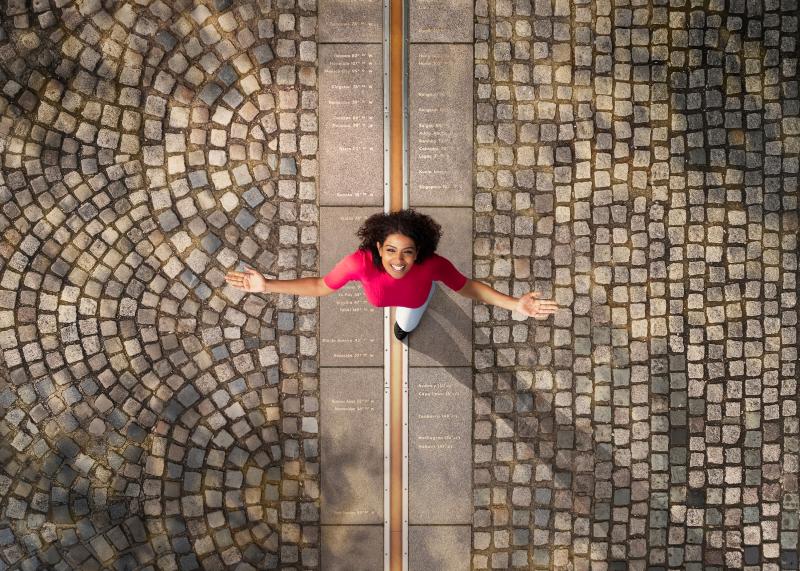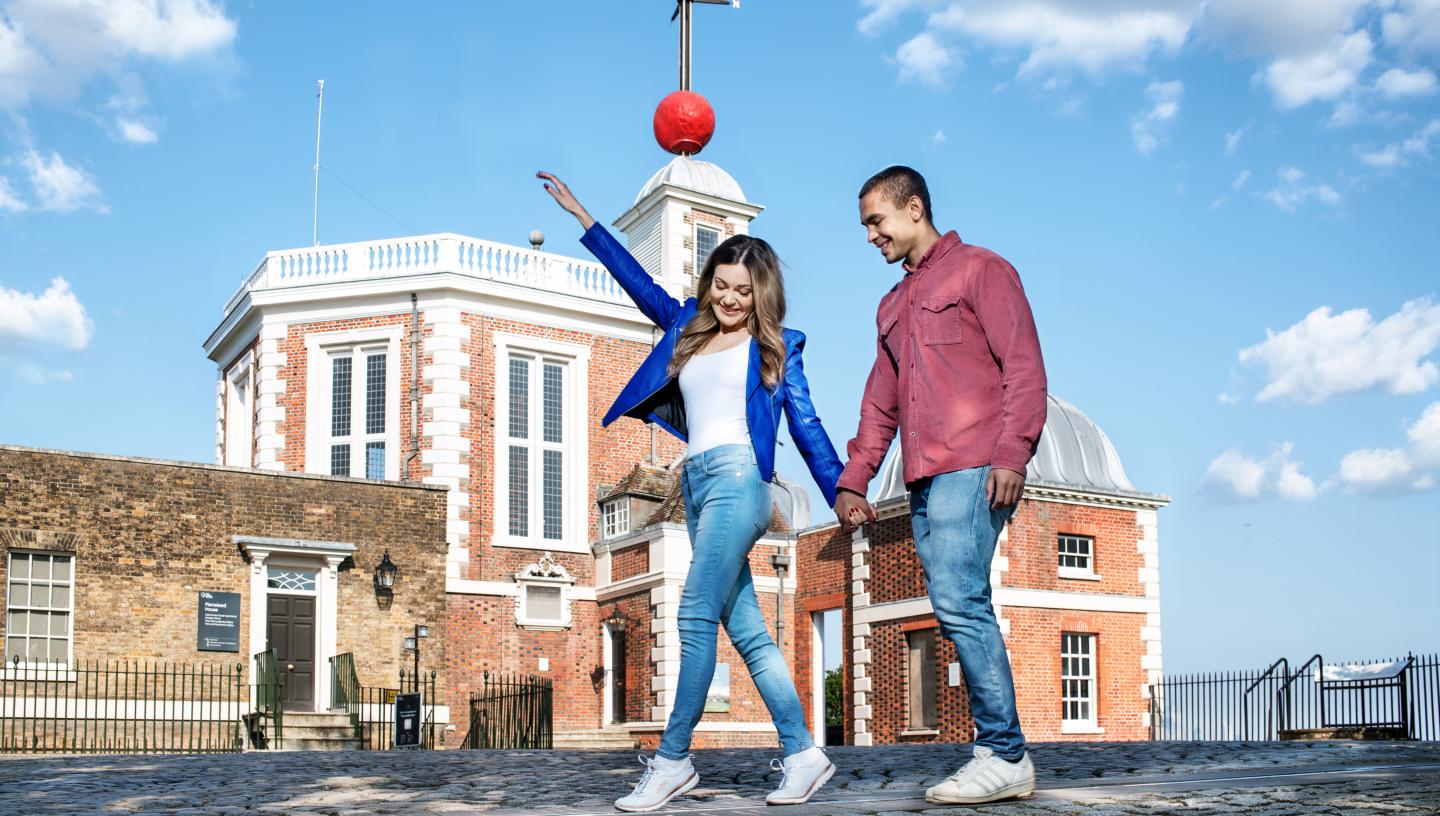
Greenwich is the place where east meets west and time itself is defined.
Home to the Royal Observatory and the historic Prime Meridian line, Greenwich blends scientific history, maritime heritage and world-class museums.
Visit the place that gave Greenwich Mean Time to the world, and discover the best that London's historic royal borough has to offer.
5 unmissable sights

Stand on the Prime Meridian line
The historic Prime Meridian of the world is Royal Observatory Greenwich's most famous landmark. This is the line that divided the eastern and western hemispheres of the Earth, and ushered in the global time system we still use today.
Stand with one foot in the east and one in the west for an iconic photo, then take a tour round the historic buildings to find out how the Observatory found itself at the centre of the world. Time, astronomy, history and navigation – it all comes together at the Royal Observatory.
Plan your visit to the Royal Observatory
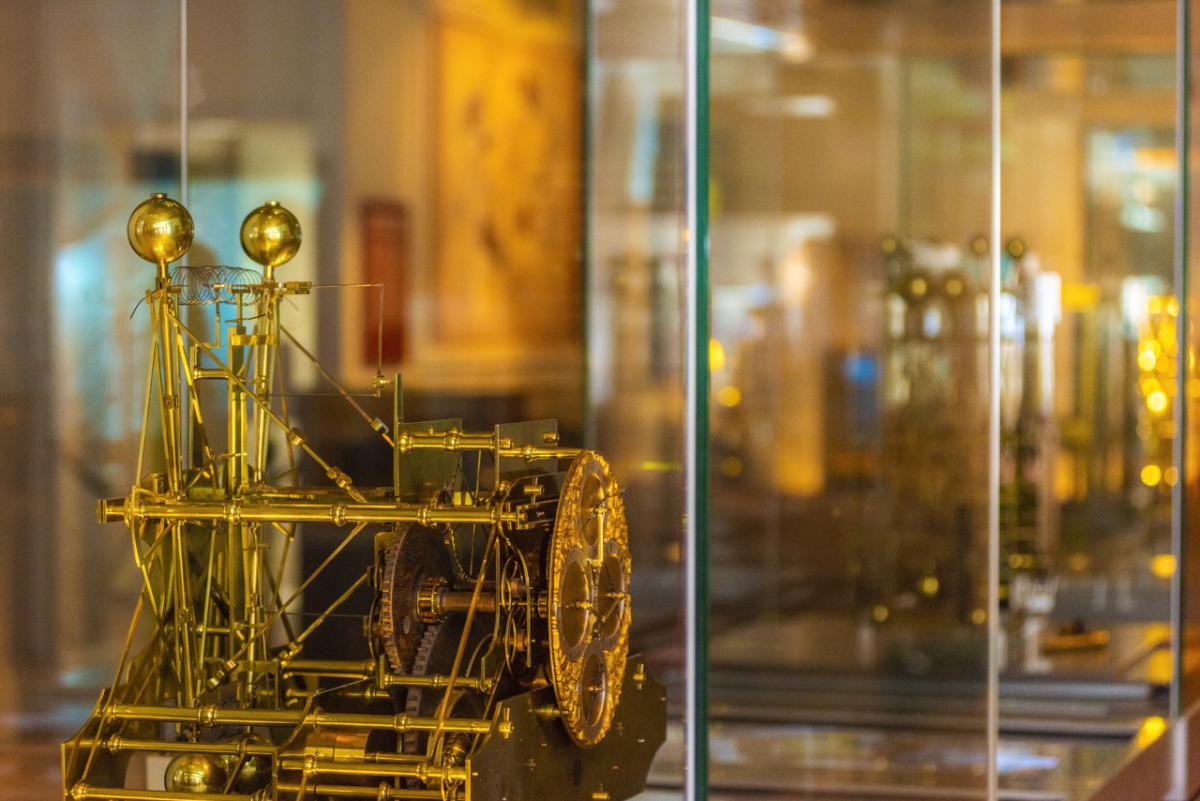
See the Harrison clocks
Your time in Greenwich doesn't stop at the Prime Meridian line – there's a whole lot more to explore at the Royal Observatory.
Before GPS and smartphones, it was difficult for sailors to know their precise location at sea. While finding their 'latitude' (their position north or south) was possible using the Sun and stars, working out their 'longitude' (position east or west) was harder.
Carpenter-turned-clockmaker John Harrison held the solution.
His revolutionary 'marine chronometers' (sea clocks) kept accurate time, even while at sea. This accuracy allowed sailors to calculate the difference between their local time and the time in Greenwich. From this they could work out their longitude.
Chronometers based on Harrison's dramatically reduced the risks of travelling by sea. The Royal Observatory became a testing laboratory for these vital instruments, and Greenwich confirmed its status as a centre for global time and navigation.
See the Harrison clocks on display inside the Royal Observatory's dedicated 'Time and Longitude' gallery.
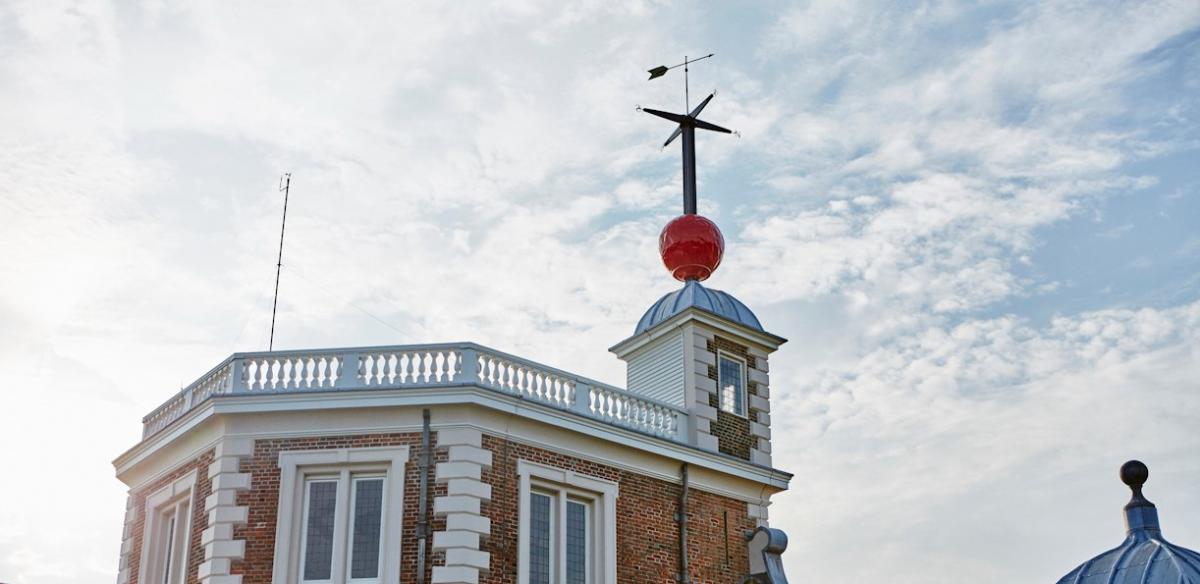
Watch the Greenwich Time Ball drop
The bright red Time Ball on the top of the Royal Observatory is a distinctive spot on the Greenwich skyline. It also serves a very practical purpose.
The Time Ball was first set up in 1833 as a way for ships moored in the Thames to set their clocks – and it still operates today.
Each day at 12.55pm, the ball rises half way up its mast. At 12.58pm it rises all the way to the top. At 1pm exactly, the ball falls, providing an accurate time signal for anyone who happens to be looking up the hill towards the Royal Observatory.
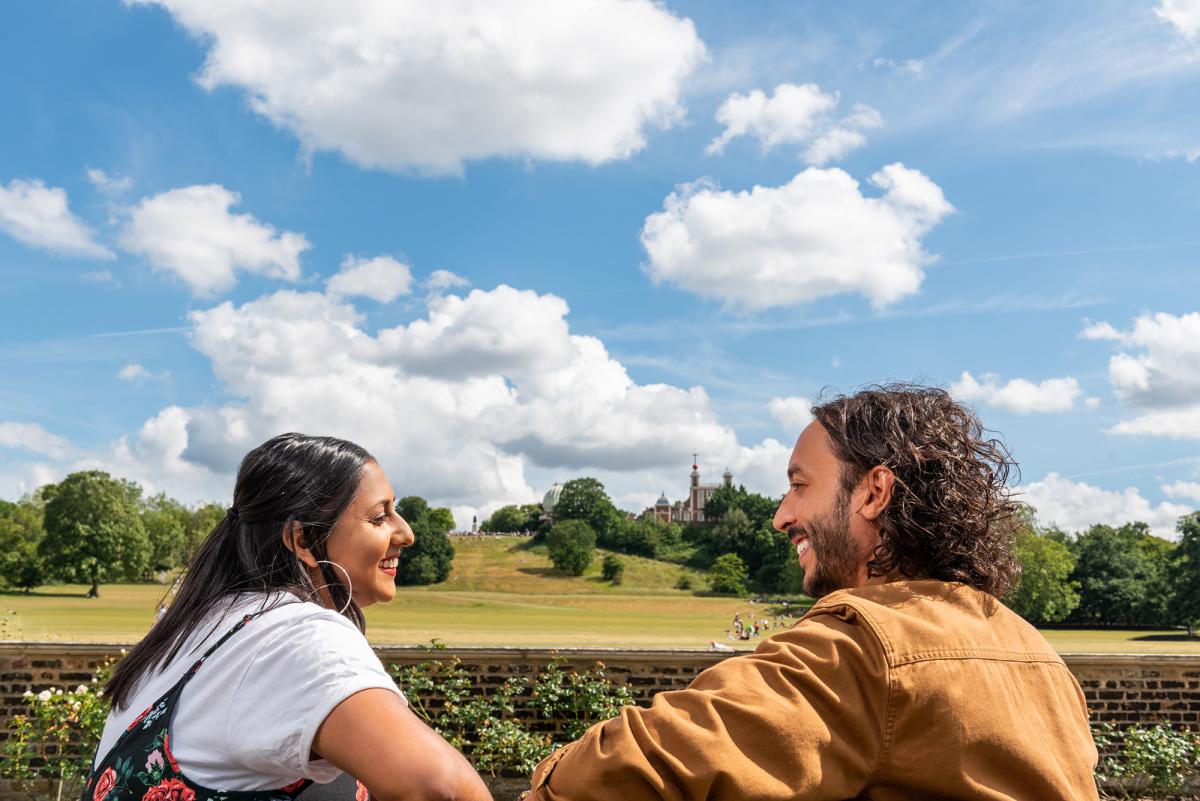
Let time slip away in Greenwich Park
Greenwich Park is one of London's oldest Royal Parks, and traces of times long gone are everywhere.
Start by enjoying the view from the platform outside the Royal Observatory, comparing the historic buildings of Greenwich's UNESCO World Heritage site with the gleaming skyscrapers of Canary Wharf beyond.
Later, take a picnic into the park and search for signs of the Park's deeper history, from the remains of a Roman temple to the tree that reportedly once sheltered Queen Elizabeth I.
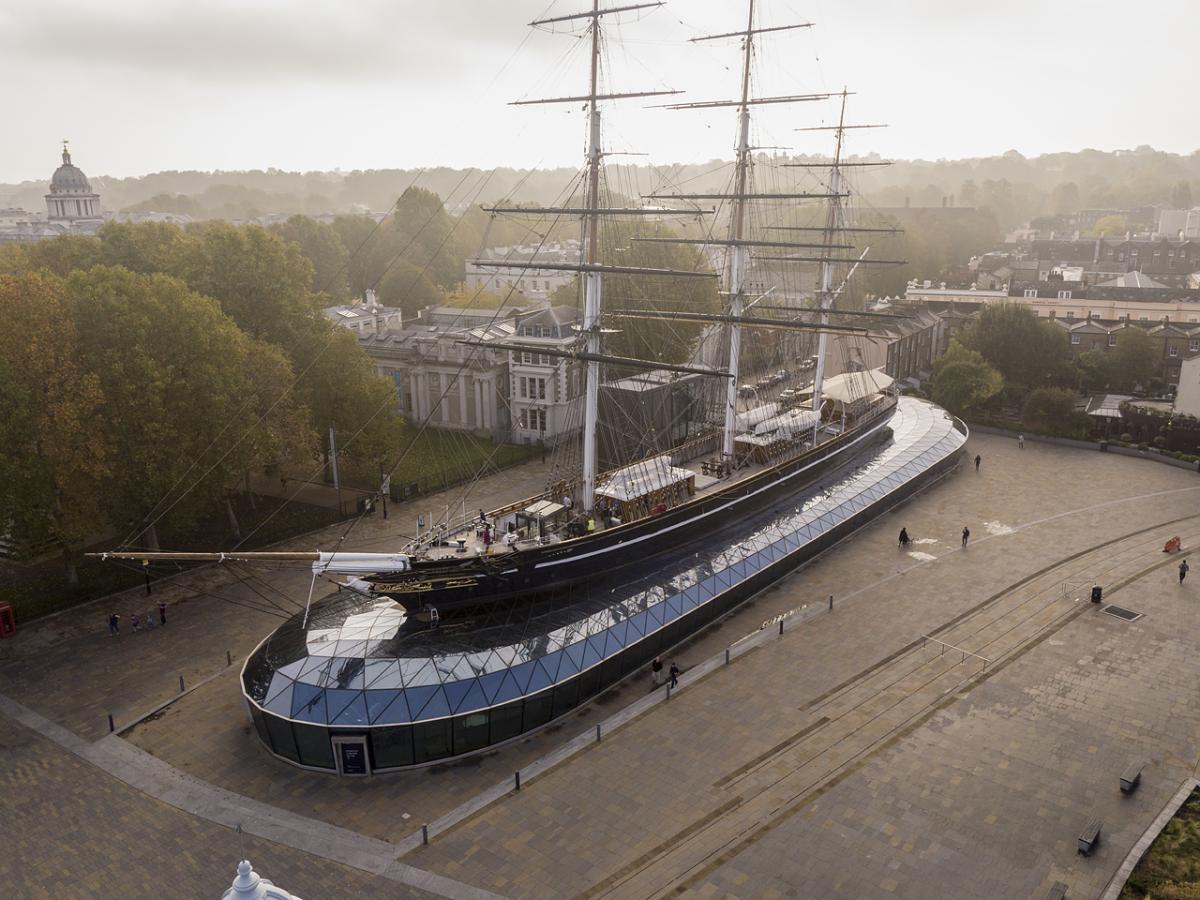
Marvel at Cutty Sark: a true time traveller
Cutty Sark is the world's sole-surviving tea clipper. Stepping aboard is like stepping back in time, to an era when sailing ships travelled the world and seafarers battled wind and wave to deliver their cargoes as quickly as possible.
Cutty Sark could have been lost to history many times over the course of its long life. Today however, shipkeepers and conservation experts work tirelessly to care for the ship, preserving this maritime survivor for current and future generations.
Essential information for your Greenwich time trip
Best time to visit
Greenwich is beautiful throughout the year. In spring Greenwich Park bursts into life, with the famous cherry blossom coming into flower from late April to early May.
Summer is ideal for visitors to Cutty Sark, as the Main Deck is bathed in sunshine. This can be the busiest time for Museum and Observatory visitors, but regular activities and events make it a perfect time to visit with kids.
Autumn brings quieter days and more opportunity for exploring the many museums and historic interiors, while in winter Greenwich town centre glows with Christmas lights and festive markets.
Getting here
Greenwich is a quick, easy journey from central London, and once here all the historic sites are within easy walking distance of each other.
Frequent train services call at Greenwich and Maze Hill rail stations, while Cutty Sark DLR station provides easy connections with the London Underground network.
Travelling by boat to Greenwich is a picturesque alternative. Glide past London's city sights slide before alighting at Greenwich Pier, right next to Cutty Sark and the Old Royal Naval College.
Booking tickets
The Royal Observatory and Cutty Sark are both part of Royal Museums Greenwich, a collection of museums that also include the National Maritime Museum and the Queen's House.
Tickets for all sites are available online, and we recommend booking in advance to receive updates before your visit.
If you're planning on visiting both the Royal Observatory and Cutty Sark, save money by booking a Greenwich Day Pass which gives you access to both sites. Both the National Maritime Museum and Queen's House are free to visit, meaning it's possible to visit four different museums all in one day on one ticket.
